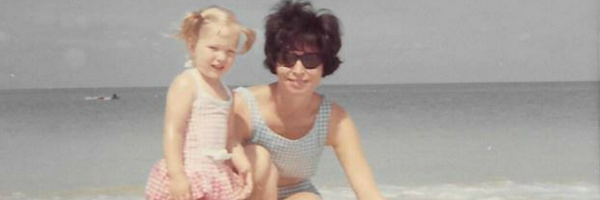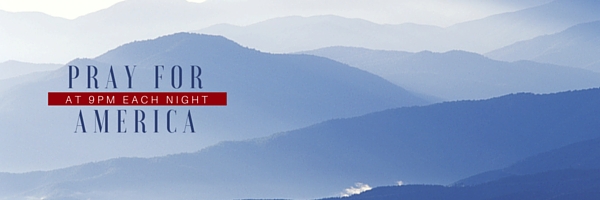How Much Hope Do You Have?
A friend recommended I watch the movie, The Shawshank Redemption. “It’s all about freedom,” she said.
That was enough to pique my interest. So I DVR’d a television-cut version and watched it last week.
In the movie a successful banker, Andy Dufresne, is sentenced to two back-to-back life sentences for presumably murdering his wife and her lover. From the start, we don’t know whether Andy really did it or not, but he winds up in Shawshank Prison alongside Morgan Freeman’s character, “Red,” who has already been there for nearly twenty years. Red and Andy eventually become friends.
I hesitate to give away too much of the story, because it’s a movie you’d really want to watch yourself, but suffice it to say there are four types of inmates in Shawshank Prison:
- The predators who terrorize others.
- The new inmate who is terrorized by the predators.
- Those who hold out hope and try to make the best of their situation.
- Those who have lost all hope and have now become “institutionalized.” They wouldn’t know what to do with freedom if they had it. In fact, the thought of it is a fate worse than death.
In the movie, Andy starts out as the new inmate, terrorized by predators, but something inside him can never be broken. Through the power of hope, Andy breaks free of the “prison within the prison,” shakes off the predators, and makes the best of a terrible situation. He finds ways to serve and help his fellow inmates.
At one point, Red warns Andy, “Let me tell you something my friend. Hope is a dangerous thing. Hope can drive a man insane.” But, Andy refuses to give up hope. His hope leads to action – small, consistent daily actions which eventually lead to ultimate freedom.
Hope, like freedom is an interesting concept. Neither of them can be fully comprehended without experiencing their opposites.
Look up any definition of freedom, and you’ll notice it is often defined by referring to the absence of something else: the absence of restraints, slavery, detention, coercion, force, arbitrary exercise of authority, restrictions, control, oppression or interference.
Freedom and hope are like light. Only when one has stumbled around in the dark, does one truly appreciate a flashlight. Only when a person has been limited in some way, does he appreciate freedom. And only when someone has found himself in a seemingly hopeless situation, does he appreciate the ray of light that only hope can bring.
Some think that freedom can be taken to an extreme… that too much freedom is a bad thing. I do not agree. You might say, “Well, what if someone decides he has the freedom to kill, to steal, to maim, or to force? That’s freedom gone awry.”
Even if our society wasn’t set up to punish such actions, you really are not talking about freedom anymore, because now there is no longer the “absence of restraints, coercion, force, arbitrary exercise of authority, control, oppression or interference.” You’ve just imposed those on someone else.
Or you might say, “What if a person chooses unrestrained access (aka freedom) to play video games all day or consume excessive amounts of alcohol or drugs… that is freedom gone awry.” I say that is no longer freedom because now the person is addicted (in bondage) to video games, alcohol and drugs.” Freedom is no longer present because its opposites are.
Thus, we learn three important principles about freedom:
- Freedom is a two-way street. Freedom for me means freedom for you and vice versa. The moment I seek to impose my will upon you, freedom has fled.
- Freedom requires personal responsibility and self-control. Excess is not freedom because excess becomes addiction and addiction is bondage.
- Freedom feeds on hope. The moment hope is lost, people stop doing the little things to move forward and foster freedom. Without daily consistent actions, driven by hope, freedom is impossible. Slavery is inevitable.
All the other inmates in Shawshank Prison gave into hopelessness and wasted their time. Andy, on the other hand, used his time to improve the environment in which he lived and take daily actions toward a freedom that only he envisioned.
For those of us who value freedom, remember hope. As Andy tells Red at the end of the movie,
Remember Red, hope is a good thing, maybe the best of things, and no good thing ever dies.”
About Marnie Pehrson Kuhns
Marnie Pehrson Kuhns is a Certified SimplyAlign Practitioner™ who uses music and creativity to mentor you past barriers, fears and doubts to discover, create, align with, and deliver your soul’s song (the mission, message or purpose you are on this earth to live). Marnie is a best-selling author with 31 fiction and nonfiction titles. If you'd like Marnie and her husband Dave to work with you personally on Your Great Reinvention, get a FREE 20-minute strategy session with Marnie here.
- More Posts(413)


Very interesting take, Marnie! I really love your principle #3, and the way you outline the fine line between freedom and loss of it. Great food for thought – could chew on this one for quite a while!
You’ve thought through his wonderfully and clearly, Marnie. I watched “Shawshank Redemption” years ago and remember it being very powerful, but you’ve uncovered some additional layers of significance for me. I found a similar theme in Corrie Ten Boom’s writings about her Holocaust experience. Thank you!
So many fabulous moments in this post, Marnie. Thanks for the lovely scaffolding to explore freedom anew. I was especially intrigued by your definition of freedom as ‘the absence of.’ It correlates with the nothingness I experience in energy play.